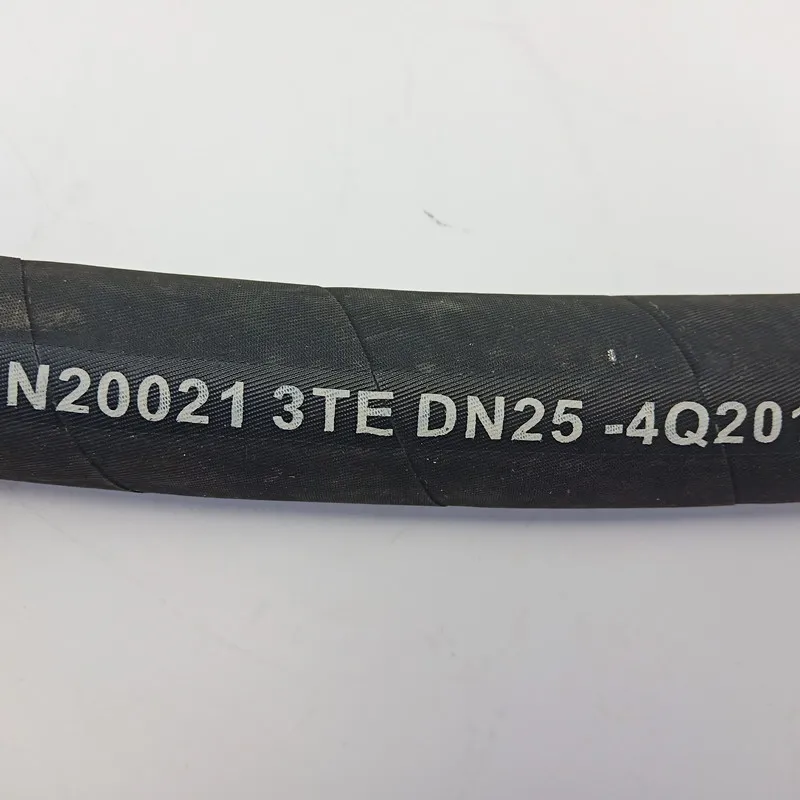May . 13, 2024 12:14 Back to list
Braided Hydraulic Hose vs Spiral Hydraulic Hose
Braided Hydraulic Hose vs Spiral Hydraulic Hose
warm-up
Hydraulic hoses in the mainstream are reinforced with either braid or spiral construction type.
The hydraulic hose reinforcement layer function in offsetting the pressure from the inner hydraulic fluid when they are at work. hence, it is necessary to design a compact reinforcement pattern to improve the hydraulic hose pressure rating.
At the current time, the SAE 100R and EN 853, 856,857 series standards stipulate the construction of hydraulic hoses, reinforcement layers are divided into two main types in terms of construction pattern: braid and spiral.
In the braided hydraulic hose category, it is divided into fiber-reinforced hydraulic hoses and steel wire-reinforced hydraulic hoses.
What are braided hydraulic hoses?
Braided hydraulic hoses are reinforced with alternating crisscross bunches of fiber or steel wires, these crisscrosses are interlocking, and every bunch of wires is parallel and has no kinks. this construction pattern forms a high-pressure resistance against the inner tube.
What are spiral wound hydraulic hoses?
Spiral hydraulic hoses are reinforced with multi-layers of parallel helical wound steel wires in alternating directions.
Braided hydraulic hose construction is more flexible than the construction of counterparts in a spiral pattern, but they have lower pressure resistance.
Braided hydraulic hoses are more suitable for low- or medium-pressure applications such as return hoses and they are easy to bend and mount in a limited space.

Spiral hydraulic hoses are often used in high-pressure requirements and heavy-duty large machinery such as off-road dump trucks, and mining excavators.

Conclusion
The reinforcement layer is vital to the hydraulic hose, and it relates tightly to the pressure rating that a hydraulic hose can endure. Fortunately, some authoritative organizations give role models for us, The SAE and DIN EN standards shaped the specific hydraulic hose you want to choose.
-
Rubber Air Hose 3/8 - Durable & High Pressure Industrial Grade
NewsAug.03,2025
-
Durable 3/8 Rubber Air Hose - GPT-4 Turbo Model
NewsAug.02,2025
-
Premium 3/8 Rubber Air Hose | Durable & High-Pressure
NewsAug.01,2025
-
Durable 3/8" Rubber Air Hose | High Pressure Resistant
NewsJul.31,2025
-
3/8 Rubber Air Hose: Flexible, Durable High-Pressure Air Line
NewsJul.31,2025
-
Durable Rubber Air Hose 3 8 - High Flexibility & Heat Resistance
NewsJul.30,2025

